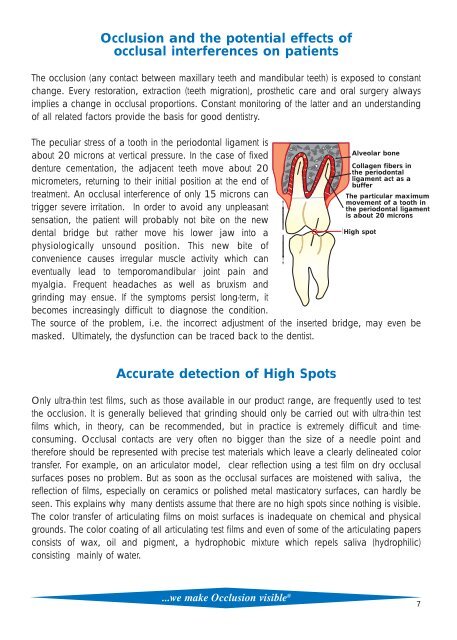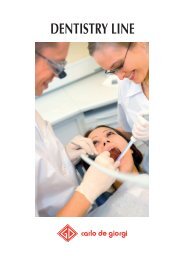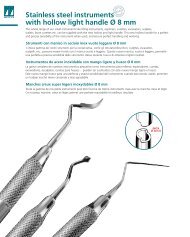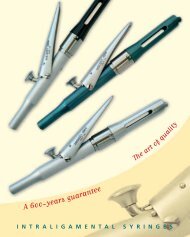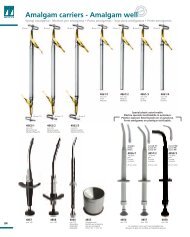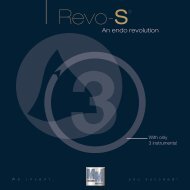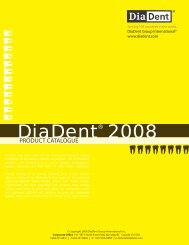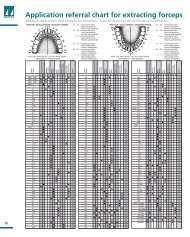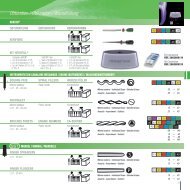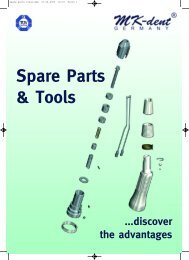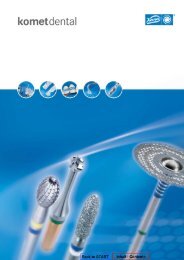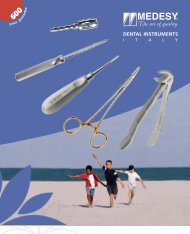Bausch Articulating Papers - Janouch Dental
Bausch Articulating Papers - Janouch Dental
Bausch Articulating Papers - Janouch Dental
You also want an ePaper? Increase the reach of your titles
YUMPU automatically turns print PDFs into web optimized ePapers that Google loves.
Occlusion and the potential effects of<br />
occlusal interferences on patients<br />
The occlusion (any contact between maxillary teeth and mandibular teeth) is exposed to constant<br />
change. Every restoration, extraction (teeth migration), prosthetic care and oral surgery always<br />
implies a change in occlusal proportions. Constant monitoring of the latter and an understanding<br />
of all related factors provide the basis for good dentistry.<br />
The peculiar stress of a tooth in the periodontal ligament is<br />
Alveolar bone<br />
about 20 microns at vertical pressure. In the case of fixed<br />
Alveolarknochen<br />
Collagen fibers in<br />
denture cementation, the adjacent teeth move about 20<br />
Kollagene the periodontal Faserbündel<br />
im Desmodont<br />
micrometers, returning to their initial position at the end of<br />
wirken ligament wie Puffer act as a<br />
buffer<br />
treatment. An occlusal interference of only 15 microns can<br />
maximale Eigenbeweglichkeit<br />
trigger severe irritation. In order to avoid any unpleasant<br />
des Zahnes im Desmodont<br />
ca.20<br />
is about<br />
μ<br />
20 microns<br />
sensation, the patient will probably not bite on the new<br />
dental bridge but rather move his lower jaw into a<br />
Frühkontakt<br />
High spot<br />
physiologically unsound position. This new bite of<br />
convenience causes irregular muscle activity which can<br />
eventually lead to temporomandibular joint pain and<br />
myalgia. Frequent headaches as well as bruxism and<br />
grinding may ensue. If the symptoms persist long-term, it<br />
becomes increasingly difficult to diagnose the condition.<br />
The source of the problem, i.e. the incorrect adjustment of the inserted bridge, may even be<br />
masked. Ultimately, the dysfunction can be traced back to the dentist.<br />
The particular maximum<br />
movement of a tooth in<br />
the periodontal ligament<br />
Accurate detection of High Spots<br />
Only ultra-thin test films, such as those available in our product range, are frequently used to test<br />
the occlusion. It is generally believed that grinding should only be carried out with ultra-thin test<br />
films which, in theory, can be recommended, but in practice is extremely difficult and timeconsuming.<br />
Occlusal contacts are very often no bigger than the size of a needle point and<br />
therefore should be represented with precise test materials which leave a clearly delineated color<br />
transfer. For example, on an articulator model, clear reflection using a test film on dry occlusal<br />
surfaces poses no problem. But as soon as the occlusal surfaces are moistened with saliva, the<br />
reflection of films, especially on ceramics or polished metal masticatory surfaces, can hardly be<br />
seen. This explains why many dentists assume that there are no high spots since nothing is visible.<br />
The color transfer of articulating films on moist surfaces is inadequate on chemical and physical<br />
grounds. The color coating of all articulating test films and even of some of the articulating papers<br />
consists of wax, oil and pigment, a hydrophobic mixture which repels saliva (hydrophilic)<br />
consisting mainly of water.<br />
...we make Occlusion visible ®<br />
7


